BOEM develops, conducts and oversees world-class scientific research to inform its policy decisions. By using science, regulatory frameworks and input from others, the bureau considers the potential for BOEM activities to impact the ocean’s physical characteristics, biological resources and marine or coastal uses that are important to the environment and society.
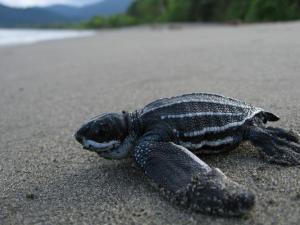
Leatherback Sea Turtle
Meet the globe-trotting giants of the ocean: leatherback sea turtles, renowned for their soft, leather-like shells and extraordinary diving abilities. Weighing up to 2,000 pounds and measuring up to 7 feet, these turtles traverse vast distances, from tropical nesting sites to chilly feeding grounds. By feasting on jellyfish, leatherbacks play a crucial role in maintaining marine ecosystems, showcasing nature’s marvels as they navigate the open seas with unmatched grace and endurance.
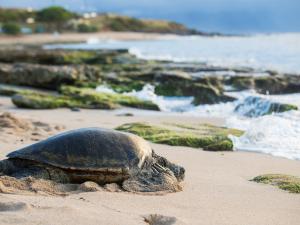
Green Sea Turtles
Gliding through tropical seas at speeds up to 35 mph, green turtles are oceanic marvels named for their unique green fat from a vegetarian diet. With heart-shaped shells that range from olive to brown, these majestic creatures play a vital role in maintaining healthy seagrass beds, which support diverse marine life. Known for their epic migrations, green turtles return to their birth beaches to nest, showcasing a remarkable lifecycle that spans over 70 years.
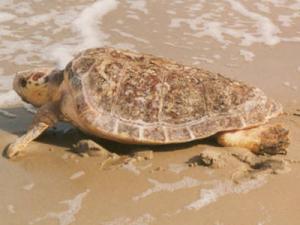
Loggerhead Sea Turtles
With their massive heads and powerful jaws, loggerhead turtles are the ocean's master foragers, able to crush crab and clam shells with ease. These heart-shaped, reddish-brown shelled giants roam temperate and subtropical waters, from the Atlantic to the Indian Ocean. Not just wanderers, they play a crucial role in marine ecosystems, controlling invertebrate populations and hosting entire communities of plants and animals on their shells.
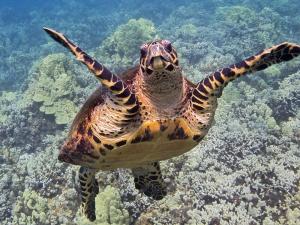
Celebrating Sea Turtle Week
Overview Sea Turtle Week, from June 8th-16th, aims to raise awareness about sea turtles, their habitats, and their struggle for survival. This year, the week begins with World Ocean Day (June 8) and
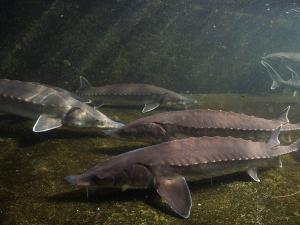
Atlantic Sturgeon: An Ancient Relic from Prehistoric Times
Fossil records from over a 120 million years ago have preserved the elongated, torpedo-shaped body of a sturgeon from a time when the Earth consisted of only two supercontinents instead of the familiar seven continents we know today. Epochs-old sturgeon fossils are remarkably the same as today’s Atlantic sturgeon—a living relic from prehistoric times.
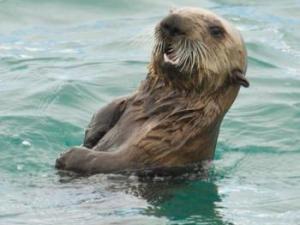
Sea Otters
One of Alaska’s largest funders of marine science, BOEM’s Alaska OCS Region is testing a new approach to studying sea otter populations. The approach uses an AI-powered technique that promises to be
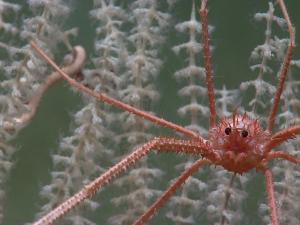
The Squat Lobster
In the hidden depths of the ocean, where life thrives in mysterious ways, the squat lobster stands out with its strikingly long claws and compact, tucked-in tail. These fascinating crustaceans, more akin to hermit crabs than true lobsters, swarm in large numbers across diverse marine habitats, from sandy sediments to deep-sea corals. Adaptable and resourceful, their diets range from plankton and algae to the wood of sunken ships, making them an extraordinary example of oceanic survival and adaptability.
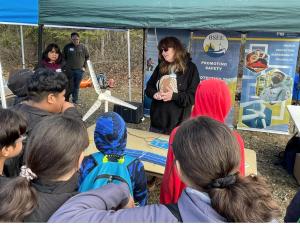
A Light-Bulb Moment
Staff members at the Bureau of Ocean Energy’s Alaska OCS Region had the opportunity to work with fifth- and sixth-graders from all over Anchorage at Outdoor Week 2024, held by the Bureau of Land Management’s Campbell Creek Science Center here May 7-10.
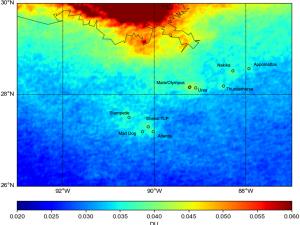
BOEM-NASA Air Quality Study Published in AGU Journal
Scientists with the Bureau of Ocean Energy Management (BOEM) and the National Aeronautics and Space Administration (NASA) recently published an analysis of nitrogen dioxide (NO2) patterns and trends in the Gulf using satellite data to identify NO2 hotspots from oil and natural gas (ONG) platforms, establish a baseline for future emissions estimates, and provide a methodology for analyzing NO2 measurements.
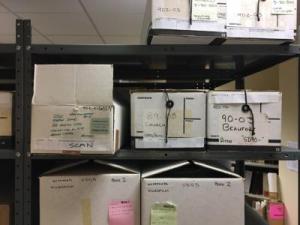
Programmatic Approaches to Data Modernization and Accessibility
BOEM is deploying innovative strategies to modernize our data by utilizing Open-Source Software (OSS), automation, and the fundamentals of computer programming.
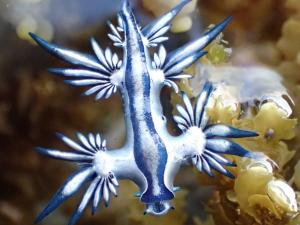
Blue Dragon Sea Slug
Dive into the mesmerizing world of the Blue Dragon Sea Slug, an ocean drifter with a lethal secret weapon. Learn about the marvels and perils of this small, yet formidable, creature of the deep.
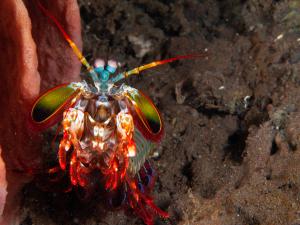
The Peacock Mantis Shrimp
The mantis shrimp (order Stomatopoda) is so named because of its blend of features: the front part of its body has the bulging eyes and grasping forelimbs resembling a praying mantis, while its latter half has the hard exoskeleton resembling a shrimp.
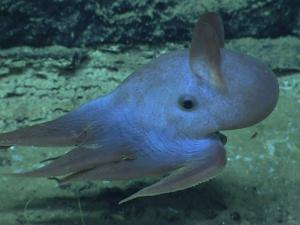
Dumbo Octopus: The Whimsical Survivor of the Deep
In the deepest part of the ocean living conditions are difficult—there is no light, little food, freezing temperatures, and overwhelming pressure. But there is a rare creature with a whimsical name that somehow manages to survive in this harsh environment.
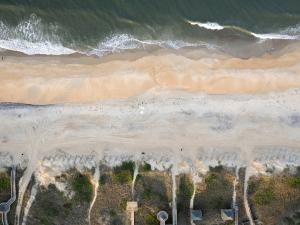
BOEM Helps to Restore Popular Outer Banks Beaches
Over the years, Outer Banks beaches have been severely impacted by extreme weather events and naturally occurring erosion. In 2022, BOEM entered into a negotiated agreement to provide access to approximately 3.14 million cubic yards of Outer Continental Shelf sand to replenish 11.65 miles of Dare County shoreline along portions of the Towns of Duck, Southern Shores, Kitty Hawk, and Kill Devil Hills. Projects like these reduce storm damage and impacts from flooding, while maintaining useable recreational beaches.
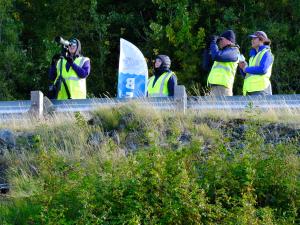
Cetacean Estimation: Belugas Count! 2023
Belugas Count! is a BOEM-sponsored, NOAA-led, and citizen-driven initiative to track the population of this ecologically important species. At the forefront of the effort are the citizens who volunteer to staff 14 public shore viewing stations around the Cook Inlet in Alaska.
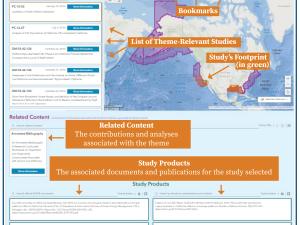
Surf 50 Years of Coastal and Ocean Science
BOEM’s Environmental Studies Program (ESP) develops, fund and manages rigorous scientific research specifically to inform policy decisions on energy and mineral resource development on the Outer
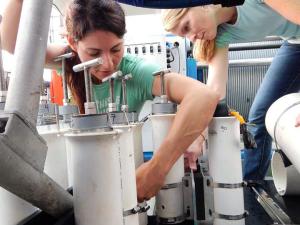
Boldly Explore Where No One Has Explored Before
BOEM is exploring the uncharted ocean off the coast of the United States, thanks to improving technology and the combined efforts of partner federal agencies.
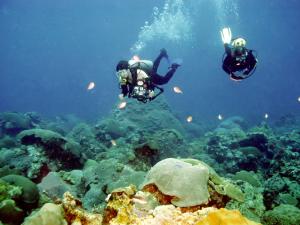
The Flower Garden Banks National Marine Sanctuary
Derived from invited article submitted by Gregory S. Boland, former BOEM employee. This year, the Department of the Interior (DOI) celebrates nearly 50 years of environmental protection of the Flower
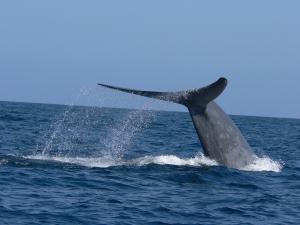
Studying Noise Impacts on Cetaceans: We’ve Come a Long Way!
Review paper summarizes the history of research efforts on anthropogenic noise effects to cetaceans.
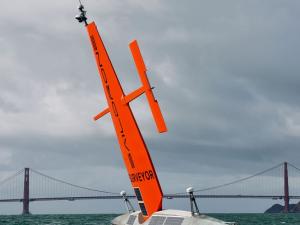
Send in the Drones
The waters around the Aleutian Islands are virtually unexplored territory. And for good reason.

